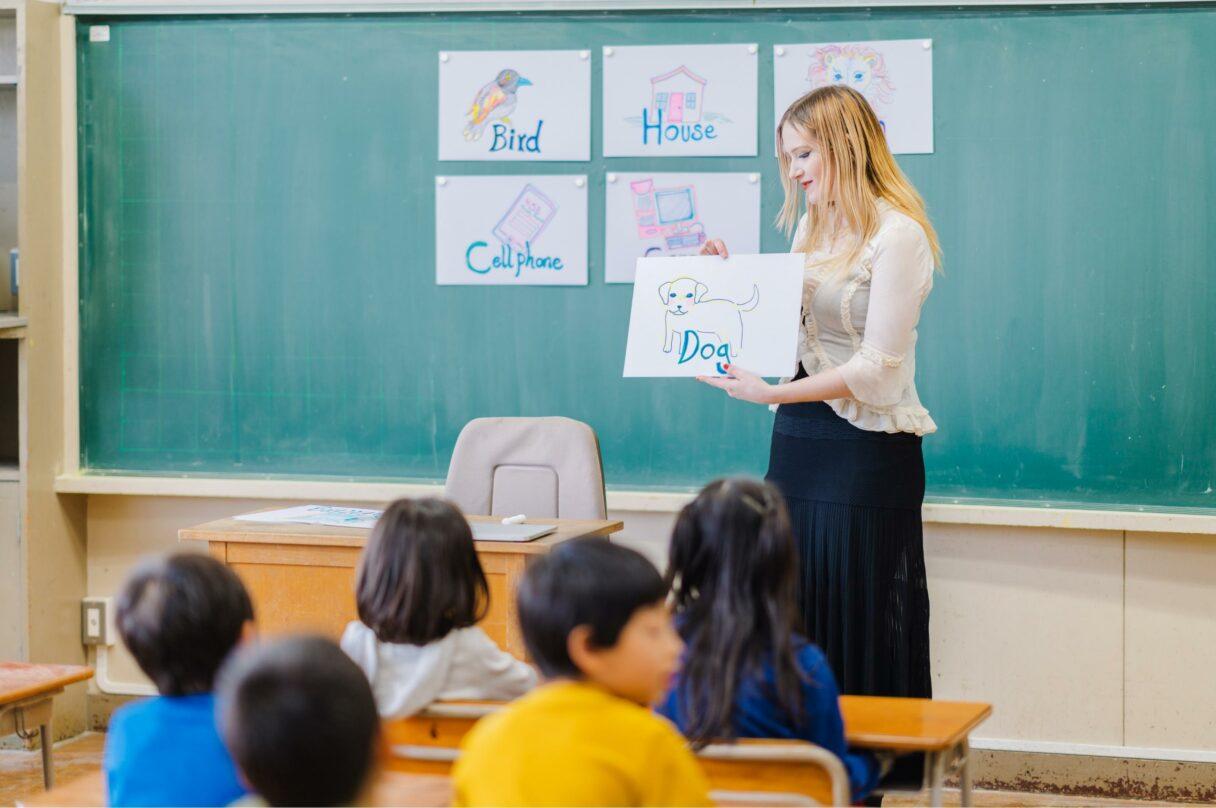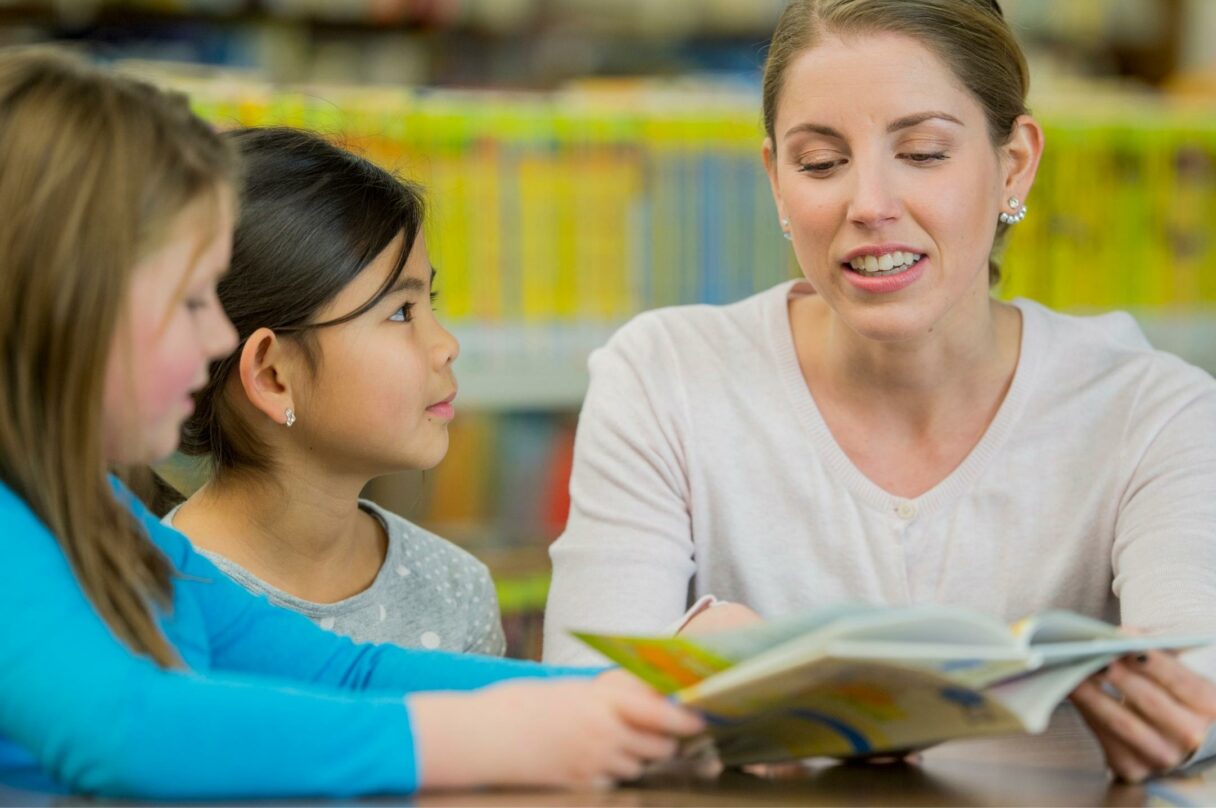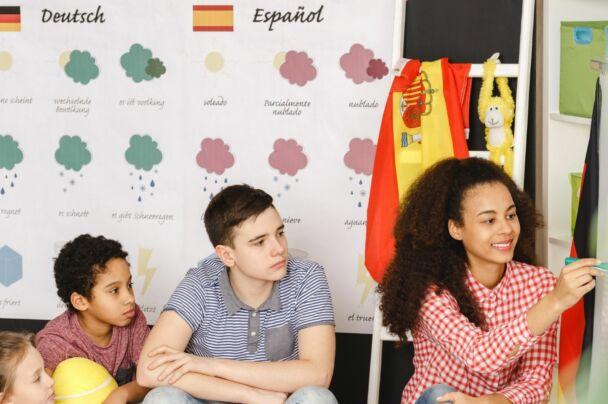Introduction to CLIL
CLIL, which stands for Content and Language Integrated Learning, is an innovative educational approach that blends subject matter instruction with language learning.
Developed in the 1990s, CLIL is credited to the Australian visionary education entrepreneur David Marsh who, since the 80s, has devoted his career to works related to multilingualism and bilingual education.
This method allows students to explore subjects like science, history, or geography while simultaneously acquiring a foreign language.
Although it initially focused on teaching English, CLIL can be applied to any language that isn’t the student’s native tongue.
This approach has gained popularity among language educators for its unique dual focus: students not only absorb content but also enhance their language skills through that content.
Because of its versatility, CLIL can cover a wide range of topics, from traditional academic subjects to more creative areas like photography, fashion, cooking, or cinema. It’s no wonder that more and more educators are incorporating CLIL into their classroom practices today.
The main benefits of CLIL

Over the years, CLIL has demonstrated countless benefits for learners, boosting both their academic performance and personal development.
Regarding academic outcomes, research has shown that CLIL helps students improve their proficiency in the target language by using it in real-world contexts, which enhances their vocabulary and grammar skills.
Students involved in CLIL programs often achieve higher levels of understanding of the subject matter, contributing to their overall cognitive growth and success in school.
But the advantages of CLIL go far beyond academic results: it’s truly transformative for personal growth as well. By tapping into students’ interests and passions through engaging content, CLIL helps combat students’ weak attention spans and makes the learning experience more dynamic.
As they dive into complex topics in a foreign language, they gain a serious confidence boost, realizing they can handle challenges and take risks.
And the best part? They get to do it all together!
CLIL methodology, in fact, prioritizes group work and collaboration: students are often invited to explore topics while working in teams. This collaborative environment is fertile ground for developing their communication and social skills.
But CLIL doesn’t stop there — it also broadens students’ horizons, exposing them to diverse cultures and perspectives. In the long run, this intercultural awareness allows them to see the world through new lenses.
The Core Features of CLIL Methodology
The 4Cs of CLIL

To implement CLIL in your classrooms, it is important to understand the key focal points on which this effective learning approach is built.
At its core are the 4Cs — Content, Communication, Cognition, and Culture — which work together to shape its methodology.
- Content refers to the subject knowledge students acquire while using the target language, making the language a tool rather than the primary focus.
- Communication is key, as students practice speaking, listening, reading, and writing in real, meaningful contexts.
- Cognition comes into play through tasks that challenge students to think critically, solve problems, and engage in deeper learning, all while processing information in the target language.
- Finally, Culture: CLIL promotes intercultural understanding and prepares students for a globalized world.
Authenticity
Authenticity is another key feature that plays a major role in CLIL.
By emphasizing the use of authentic materials and real-life contexts, CLIL makes learning more practical and relevant to students’ lives.
Let’s say you want your students to learn more about French cinema: you could, for example, incorporate movie trailers (listening), short interviews (in French) with film directors or French actors found on YouTube (listening), or movie reviews of French films (reading).
You could also include information about the places, people, or events depicted in the films (reading).
You can further engage your students in speaking and writing activities where they share their opinions or thoughts on different films, French actors and actresses, film themes, settings in French movies, or even the songs featured in French films.
This adds variety and makes learning more fun!
Active Learning

An active learning environment is what a CLIL classroom should always aim for. Students should be consistently encouraged to engage actively in their learning process, often through collaborative tasks that promote peer interaction and communication.
Scaffolding
Scaffolding is a crucial aspect of CLIL. This methodology views teachers as guides who help students gradually become more independent learners.
As a teacher, you should always remember to present information in a student-friendly way and respond to their different learning styles.
Collaboration between teachers
This is a crucial asset for a positive outcome of the CLIL implementation: language and subject teachers must team up to create a seamless learning experience where each teacher brings their strengths to the table, making sure students get the best of both worlds!
Focus on language acquisition
Of course, language acquisition is one of the main goals. But keep in mind that when it comes to language acquisition, CLIL is all about natural, meaningful interaction—not just memorizing rules.
Fluency takes priority over accuracy, and mistakes are seen as a normal part of the learning process!
Soft CLIL and hard CLIL: what is the difference?

Not every CLIL experience is the same: to be 100% efficient, this approach is meant to be adjusted to your students’ ages and language proficiency levels.
CLIL can be categorized into two main types:
Soft CLIL is often applied in primary school classrooms, especially with younger kids. It’s all about easing them into a foreign language by teaching them some basic words and phrases while mostly sticking to their native language.
This approach is perfect for beginners because it helps them get comfortable without feeling overwhelmed. They get to play with the new language in a fun, low-pressure way, building their confidence as they go.
On the other hand, Hard CLIL is when an entire course is taught in a foreign language. This method is meant for students who already have an intermediate level or higher in that language.
They need to be pretty confident and independent in their language skills since everything—lectures, discussions, and assignments—happens in the target language.
Hard CLIL can be quite challenging, but it’s also a great way for more advanced learners to deepen their understanding of both the subject matter and the language.
The challenges of planning CLIL Lessons
Planning CLIL lessons comes with its own set of challenges, especially when one teacher is expected to fill two roles: the language teacher and the subject instructor at the same time.
This might be difficult to handle, and this is why, as we previously said, each CLIL course should ideally have both a subject expert and a language expert: collaboration is key!
The biggest hurdle for language teachers is often the lack of deep content knowledge in subjects like history, cinema, science, or whatever that specific academic content could be.
However, although they may not have a higher specialized degree in an academic content area, the good news is they have a strong grasp of how to teach language to non-native speakers.
This makes them skilled at scaffolding lessons, checking comprehension, and addressing errors in real time.
On the other hand, subject teachers may have extensive expertise in their field but struggle to adapt their content for language learners. They may also face challenges if they’re required to teach in a language, they’re not fully comfortable with.
But the good news is that each teacher brings valuable strengths: language teachers understand how to guide non-native speakers, while subject teachers offer specialized content knowledge.
The key is to leverage these strengths in CLIL classrooms for the best learning outcomes!
Challenges involve students too: especially for what concerns the level of support they need, particularly in the first couple of years.
Again, every student is different—some need more help understanding the content, while others need more support expressing their ideas. Differentiating tasks can help.
For example, instead of asking less confident students to write a full essay, have them write a short paragraph summarizing the key points.
You can also break down complex tasks into smaller, more manageable steps. For example, instead of asking students to compare two historical periods, ask them to focus on one aspect, like technology or daily life, between the two.
Provide sentence frames or templates for written work, such as “In the past, people used ______, but today we use ______.” This can help less confident students structure their thoughts more easily!
For students who struggle with reading, offer simplified or condensed versions of texts or provide visuals, like diagrams or infographics, to help them grasp the content.
For more advanced students, it’s important to offer extension activities that promote independence and critical thinking.
Encourage them to dive deeper into a topic by researching additional resources or presenting their findings to the class. Or challenge them to debate or analyze more complex issues, such as the long-term impacts of an event or idea: this will encourage deeper engagement with the content!
How to implement CLIL in your classroom
CLIL is driven by academic or other subject-matter content and teachers who are interested in (or required to) incorporate this approach in their classroom need to know and understand how to create and incorporate the teaching of the four skills reading, writing, listening, and speaking to non-native speakers of a language effectively and in a beneficial way for their learners.
The Receptive Skills: Listening and Reading CLIL activities

Receptive skills, like listening and reading, are crucial in language learning. CLIL requires that all teachers check on their learners’ comprehension of what has or has not been understood. If you do not know where to start, we’ll break it down for you!
Here’s a simple formula for a listening activity with a handout:
- Pre-teach your student’s tricky vocabulary on the matter
- Do a first listening, and make them focus on its general meaning (with no handout).
- Do a second listening and have them answer detailed questions (with a handout).
- If fewer than 50% of the questions are answered, listen a third time to fill in the gaps.
After listening, students can compare answers with their peers before you review them together as a class.
In a CLIL course in Florence, the trailer for An Inconvenient Truth is used for a cloze activity, which involves filling in missing words in a text as an overall comprehension exercise.
Students watch the 3-minute trailer first, then, on the second listen, they fill in missing words from the transcript using a word bank. If they get more than 50% of the answers, they can skip the third listen!
For a reading activity, follow this formula:
- Pre-teach vocabulary and highlight it in the text.
- Make them read aloud the text so that they can practice pronunciation.
- Let them have a second silent reading for comprehension.
Students then answer comprehension questions, either individually or with a partner.
In the same CLIL course, students read a passage about Henry VIII aloud, then silently. After reading, they answer 12 comprehension questions without referring to the text.
The Productive Skills: 5 ways to do Writing and Speaking activities
Anything that students produce in a foreign language is referred to as output. The productive skills are known as Writing and Speaking and require that teachers engage in error correction which can be done by the teacher, the student, or a peer depending on what needs to be corrected, student level, and the activity itself.
Students can work on productive activities (where writing and speaking are required) in any of the following ways:
- Individually (1)
- Pairs (2)
- Small groups (3-4)
- Two teams 50/50
- Whole class
You can use a movie or a play as input for a roleplay activity!
Let students pick a movie they want to act out, then give them the transcript. After assigning roles and highlighting their lines, have them watch and listen to their character, paying close attention to how they speak and act.
Next, depending on class size, split the students into small groups, or teams, or keep it as a whole class to rehearse the script.
Once everyone’s ready, it’s showtime!
You can have multiple performances, and the audience can give feedback, either verbally or in writing.
If your class is learning about American History, for example, you could even incorporate research and writing about different states into the project. they can also research and write about different cities along the route.
CLIL Methodology in Action

In recent years, educational strategies like Project-Based Learning (PBL) and Task-Based Learning (TBL) have become more prominent in CLIL (Content and Language Integrated Learning) classrooms.
This shift is driven by the need to make language learning more engaging, relevant, and skills-oriented.
Both PBL and TBL focus on real-world applications, collaboration, and problem-solving, which aligns perfectly with CLIL’s goal of teaching content through a second language.
Additionally, the rise of AI tools in education is enhancing how PBL and TBL are used in CLIL. AI technologies can now assist teachers in creating personalized learning experiences, providing instant feedback on tasks, and offering tailored language practice through interactive activities.
Schools are embracing this integration to make language learning more fun, and suited to modern-day challenges: let’s see them more in detail!
Integrating PBL, TBL and CLIL
Blending Project-Based Learning (PBL), Task-Based Learning (TBL), and CLIL can create a classroom environment that’s not only engaging but also highly effective.
Project- Based Learning encourages students to take on larger, real-world projects that span across different subjects, like designing solutions to global issues or researching historical events.
These projects give therefore students a chance to dive deep into the content while using a second language, fostering critical thinking, creativity, and collaboration.
TBL focuses on shorter, more focused tasks- such as solving a specific problem or creating a group presentation – that directly connect to language learning through CLIL. This allows students to apply what they’ve learned in a practical, hands-on way while improving their language skills.
Your students can get 2 for 1!
The beauty of combining PBL and TBL with CLIL is that both methods support CLIL’s goal of teaching content through a second language, making learning more meaningful.
Whether students are building models, debating issues, or creating visual presentations, they are using language as a tool to achieve specific outcomes, making the language learning process feel natural and purposeful.
AI for CLIL
AI is shaking things up in education.
The latest AI tools- like adaptive learning platforms, real-time translators, and interactive simulations – are transforming lessons into personalized, engaging experiences.
Imagine AI tracking your students’ progress and suggesting just the right content to boost both language skills and subject knowledge, or using ChatGPT to create instant language practice conversations.
Or AI-powered quizzes and games that can turn learning into a fun, interactive adventure!
By weaving AI into CLIL, you can cater to different learning styles, keep things flexible, and make your classes more dynamic and exciting!
If you’re ready to level up your teaching with AI, check out our course ICT for CLIL! You’ll get a deeper understanding of these tools and hands-on tips to seamlessly integrate them into your CLIL lessons!
Conclusion

We all know that nowadays mastering multiple languages opens doors to better education and career opportunities.
That’s where CLIL (Content and Language Integrated Learning) comes in students learn subjects through a foreign language, setting them up to be multilingual by the time they reach adulthood.
But for this to work, teachers need top-notch training to help shape globally-minded, multilingual citizens.
CLIL goes beyond language learning; it’s a mindset. It’s about embracing cultural diversity and building connections across Europe.
In a nutshell, CLIL is a dynamic, game-changing method that prepares students for a future where multilingualism is the norm.
Are you ready to dive into it? Are you still afraid you might struggle to integrate it into your classes? Take a look at Europass Teacher Academy’s main course on CLIL, and get in touch with this crucial reality!
Erasmus+ face-to-face courses on this topic:
- From CLIL to Translanguaging: Strategies to Integrate Migrants
- ICT Tools for CLIL
- CLIL in Primary School: Make It Work, Make It Effective
- CLIL in Secondary School: Practical Activities for All Teachers
And more.

